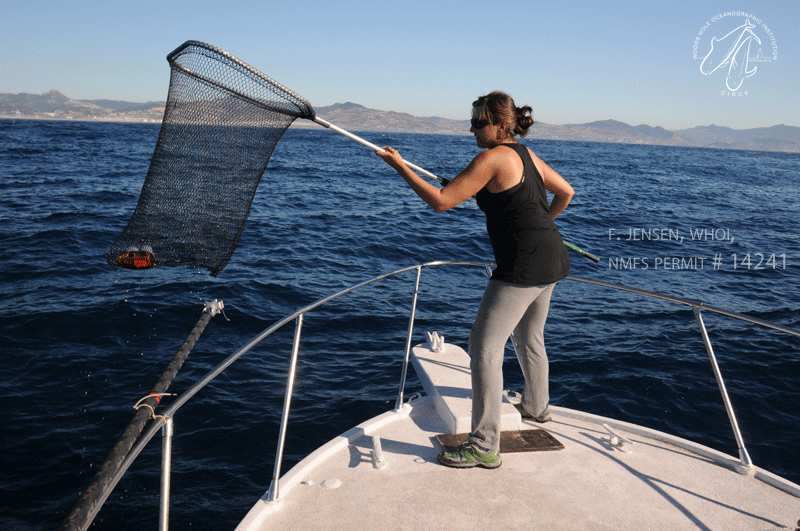 |
| A group of pilot whales logging at the surface |
Where's the tag? A moment ago we were tracking it on our radio; then it just disappeared!
Once everything gets tested on land, we bring it out for its first sea trial to see how it performs in the Strait. What we were running into here was a problem with our radio tracking equipment. It turns out that our new tags have a much much shorter range than the previous models.
Once everything gets tested on land, we bring it out for its first sea trial to see how it performs in the Strait. What we were running into here was a problem with our radio tracking equipment. It turns out that our new tags have a much much shorter range than the previous models.
 |
| We were passed by a wall of hundreds of striped dolphins |
 |
| Ruth Esteban retrieving a DTAG3 |
In the Strait of Gibraltar, there are huge currents, and even once they've released, the tags can quickly drift offshore into the Mediterranean. All of this means that if you lose track of the whales, it can derail the entire day (or even the next few days) as you try to find them.
The first sea trials are also testing our team, we were finding our sea legs, getting back into our routine of balancing on the boat and problem solving. Here, we were able to have Aixa, a CIRCE volunteer and veteran of our last 2 cruises, drive up to a mountaintop where she could radio-track with a much greater range, 30-40 miles instead of the 2 we get on the Elsa. Once she located the whales, she was able to text us a bearing and direct us in the right direction.
In the end, we found and retrieved the tag, but having someone tracking from the mountaintop is going to be a critical part of using this new equipment.
---
Nicholas Macfarlane

No comments:
Post a Comment